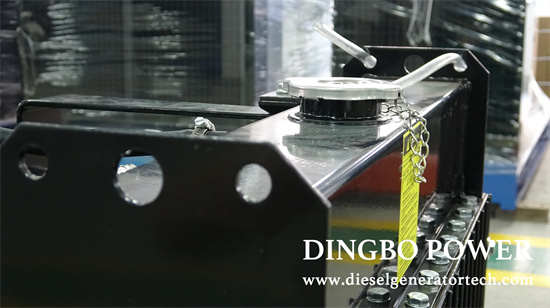What do you think should be studied for the direct air cooling system of diesel generators? Firstly, in order to minimize the impact of wind, it is necessary to study the high temperature period in summer, the wind direction at the maximum frequency under a certain wind speed, and even avoid the distance between the A-pillar and A-pillar in the design layout. During operation, relevant data should be collected through meteorological observations and summarized based on changes in the power plant's power generation load. Before project implementation, necessary object models or digital simulation tests should be conducted to guide the comparison and summary of data collected during design and future operations. During the operation of the diesel generator, the hot and cold air rises through the exhaust of the radiator, presenting the condition of a plume.

When the wind speed exceeds 8 meters/second after blowing the radiator platform from the furnace, the feather condition is damaged and hot air returns. The upflow furnace is then heated under pressure to a steel platform or smaller, such as a hot air blower that has been sucked in, in the form of hot air recirculation. Even the fan rotates counterclockwise at the extreme edge line. This project aims to increase the height of the wind wall, which overcomes hot air recirculation. The height of the wind wall should be determined by the design. The height of the platform and the height of the supporting structure platform should comprehensively consider the overall planning of the power plant and the requirements of the air cooling system itself.
Anti freezing protection is an important issue that affects the safe operation of power plants, especially in the direct air cooling system of generators. Reasonable design area ratio using downstream and upstream, i.e. K/d structures. The larger of the smaller values of "K/d" used in cold regions is the hot region. Add a windbreak to prevent strong winds, and the fan can reverse to form internal hot air circulation. After the downstream unit fan of the first station stops the countercurrent unit fan, the condensate supercooling should be strictly controlled. The above are some anti freezing measures in design and operation. How to apply them reasonably and appropriately according to different engineering conditions still requires necessary research and summary in design and on-site.
Jiangsu Dingbo Power Generation Equipment Co., Ltd. was founded in 1974 and is one of the earliest manufacturers of generators and diesel generator sets in China. The company has a registered capital of 218.88 million yuan. The company covers an area of 86,000 square meters and a building area of 55,000 square meters. There are more than 660 employees, including 456 professional technicians and 106 senior technicians. It has 46 sales and service outlets nationwide. The main products are diesel engines, generator sets, and diesel generators, providing users with a one-stop service of design, supply, debugging and maintenance at any time. Dingbo has always insisted on using first-class talents, building first-class enterprises, manufacturing first-class products, creating first-class services, and making every effort to build a first-class domestic enterprise. If any question please feel free to visit our website https://www.dieselgeneratortech.com/ or send email to sales@dieselgeneratortech.com.
Comments
Post a Comment